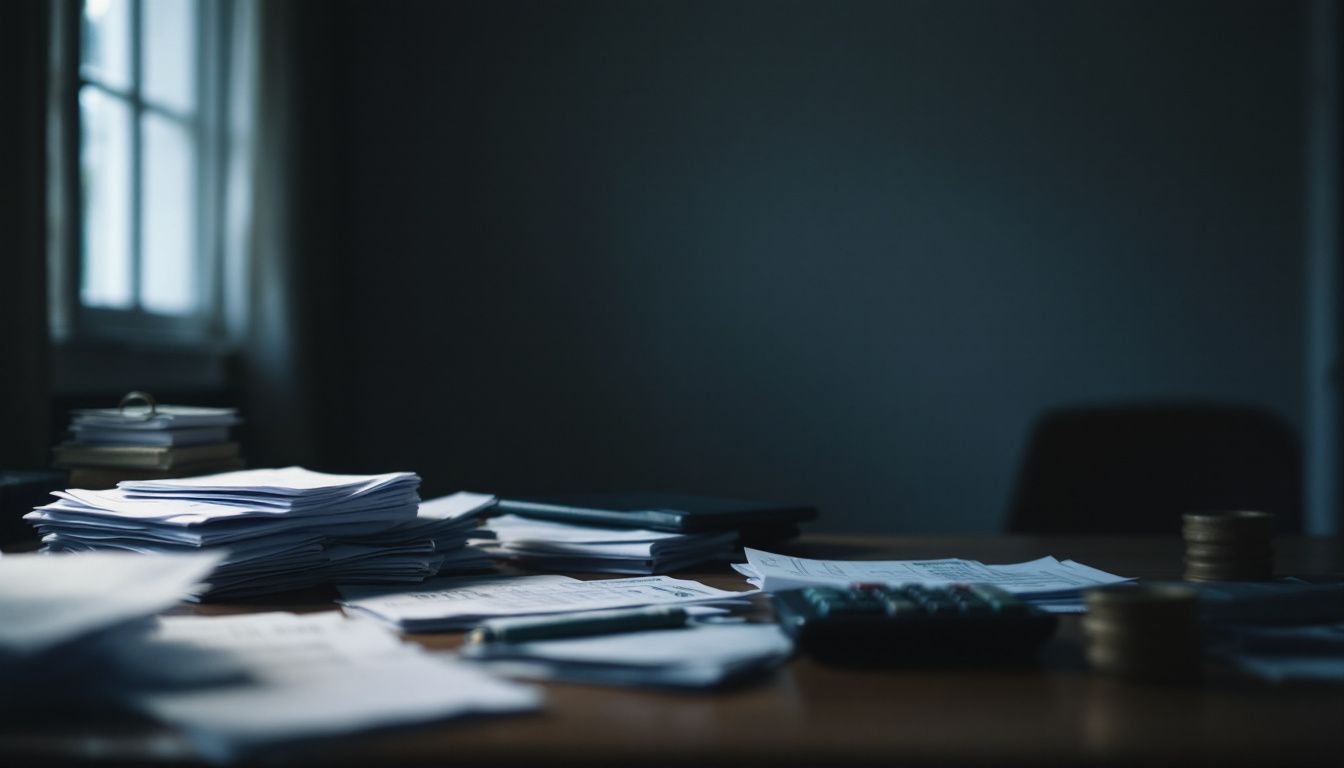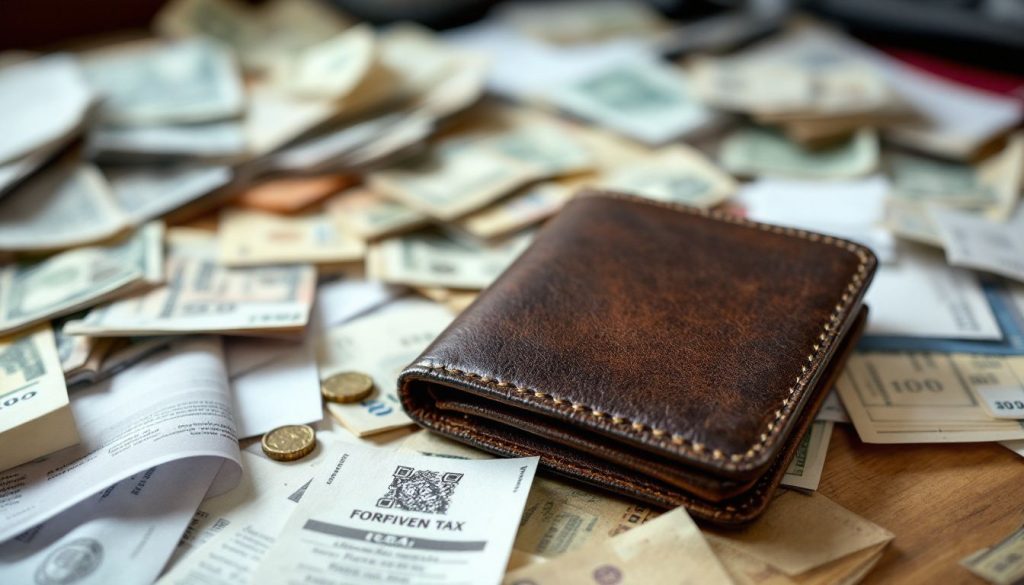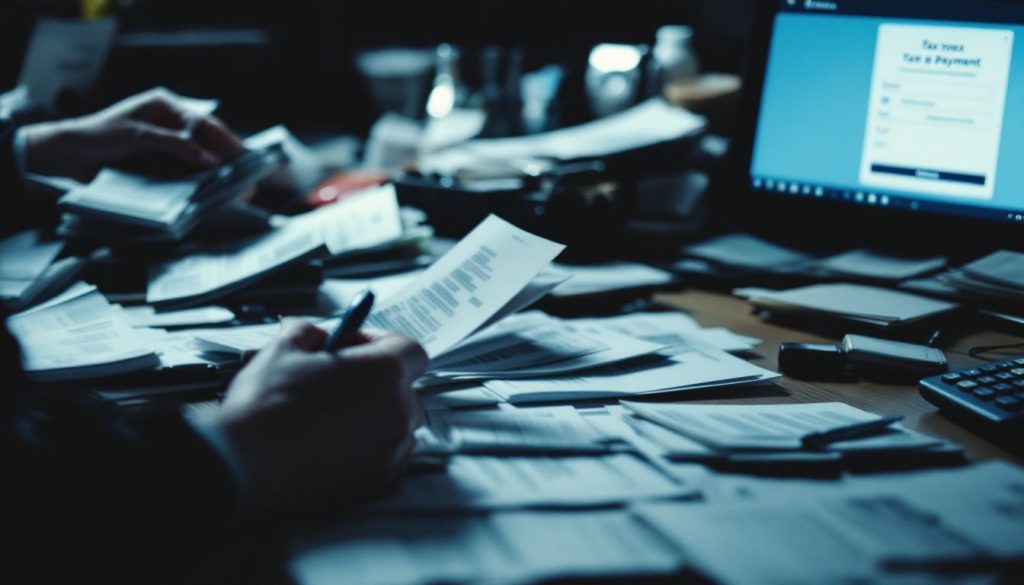Dealing with bankruptcy and CRA debt can be tough. Bankruptcy is a way to get rid of debts you can’t pay. This article will show you how bankruptcy might clear your CRA debt and other options you have.
Keep reading to learn more.
Key Takeaways
- Bankruptcy is a legal way to clear many debts, including some owed to the Canada Revenue Agency (CRA). It gives people a fresh start.
- Some CRA debts can be cleared in bankruptcy if they are unsecured and meet certain conditions like being over three years old and not having a lien.
- Not all tax debts can be erased in bankruptcy. People must follow rules and complete steps like credit counseling.
- There are other ways to handle CRA debt without declaring bankruptcy. Options include making a consumer proposal, setting up repayment plans, or consolidating debts.
- It’s important for individuals to explore all options before choosing bankruptcy. This helps find the best solution for dealing with CRA debt.
What is Bankruptcy and How Does it Work?
Bankruptcy is a legal process. It helps people who cannot pay their debts.
Definition of bankruptcy
Bankruptcy is a legal process. It helps people who cannot pay their debts. An honest debtor can get a discharge from most of their debts. This includes many kinds of tax debt owed to the Canada Revenue Agency (CRA).
Certain types of CRA debt can be cleared through bankruptcy, like back taxes if specific conditions are met. The Insolvency Act outlines these rules in Canada. Filing for bankruptcy does affect your credit score, often leading to severe consequences.
Bankruptcy allows individuals to find relief from overwhelming financial distress.
Purpose of bankruptcy
Bankruptcy helps people in serious financial trouble. It is a legal process that allows an honest person to clear most of their debts. This includes debt owed to the Canada Revenue Agency (CRA).
The main goal of bankruptcy is to give individuals a fresh start. They can rebuild their lives without being weighed down by old debts.
This process can discharge various types of CRA debt, like income tax and back taxes. To qualify, certain conditions must be met. For example, the CRA cannot have secured the tax debt with a lien before filing for bankruptcy.
Understanding these rules can aid those facing financial hardship and seeking effective solutions for their debts owed to the Canada Revenue Agency.
Rights and responsibilities of a bankrupt
Bankruptcy gives people a chance to start fresh. It comes with certain rights and responsibilities.
- A bankrupt can keep some assets. Laws in Canada protect basic items like clothing, tools for work, and household goods.
- Creditors must follow rules when dealing with a bankrupt person. They cannot harass or threaten individuals who have filed for bankruptcy.
- Full disclosure of debts is required. All debts owed must be reported to the trustee handling the bankruptcy process.
- A debtor has the right to apply for a discharge from most debts after completing their obligations. This includes most CRA debts, such as income tax debts.
- Responsibilities include attending meetings with creditors and trustees. These meetings help explain plans for debt repayment or discharge.
- A bankrupt must also keep up with payments on secured debts if they wish to keep those assets. For example, this includes mortgage or car loan payments.
- Filing for bankruptcy impacts credit scores significantly. It may stay on a credit report for up to seven years, depending on the type of bankruptcy filed.
- Educational programs about debt management are often required during bankruptcy proceedings. This helps individuals learn how to avoid future financial troubles.
- There are limits on obtaining new credit while in bankruptcy without informing lenders of your status as a bankrupt individual.
- Lastly, understanding these rights and responsibilities helps navigate the bankruptcy process more smoothly.
Next, we will explore how bankruptcy affects CRA debt specifically.
How Does Bankruptcy Affect CRA Debt?
Bankruptcy can help people reduce or eliminate their debts to the Canada Revenue Agency (CRA). Some tax debts may be cleared through this process, but certain rules apply.
Types of CRA debt that can be cleared
Some types of Canada Revenue Agency (CRA) debt can be cleared through bankruptcy. This includes back taxes as long as the CRA did not secure the tax debt with a lien before filing for bankruptcy.
Most debts owed to the CRA can be discharged, including income tax.
Certain conditions must be met to clear this debt. You need to demonstrate financial inability to repay your tax debt. After filing for bankruptcy, you may find relief from these burdensome debts and start fresh financially.
Conditions for clearing CRA debt through bankruptcy
Clearing CRA debt through bankruptcy has specific conditions. You must meet these rules to be eligible for discharge.
- Unsecured Debt: Most CRA debts are unsecured. Income tax and GST debts can often be cleared through bankruptcy. However, secured debts linked to CRA may not qualify.
- Filing Timeline: The tax debt must be at least 3 years old. If you file within this period, the CRA can still collect.
- No Tax Lien: You cannot have a lien on your property from the CRA before filing for bankruptcy. A lien means the CRA has legal rights to your assets due to unpaid taxes.
- Honesty in Disclosure: You must fully disclose all financial information during the bankruptcy process. Hiding debts or assets can lead to denial of discharge.
- Participate in Process: Engage actively in the bankruptcy proceedings. Attend meetings and provide requested documents to your trustee.
- Education Requirement: Complete credit counseling courses as required by law during your bankruptcy period. This education helps you manage finances better after discharge.
- Awaiting Discharge: Your debts will only be discharged after completing the necessary steps in your bankruptcy case, which may take time depending on various factors like payment plans or additional income disputes.
Understanding these conditions is crucial for Canadians considering this option for tax debt relief with the Canada Revenue Agency (CRA).
Alternatives to Bankruptcy for Dealing with CRA Debt
You can choose other options besides bankruptcy to handle your CRA debt. These methods can help you pay off what you owe without going through a bankruptcy process.
Consumer proposals
A consumer proposal is a legal way to deal with debt. It allows Canadians to make an offer to pay back a part of their debts over time. This plan can help avoid bankruptcy. You can work with a licensed trustee to create this proposal.
Through a consumer proposal, you may keep your assets and debts owed to Canada Revenue Agency (CRA) could be managed better. Unlike bankruptcy, it does not severely impact your credit score.
Many people use it as an alternative for debt resolution when faced with financial inability to repay tax debt or other obligations.
Repayment plans
Repayment plans help Canadians manage their debts. These plans allow you to pay off CRA debt over time instead of through bankruptcy. You make regular payments based on what you can afford.
CRA insolvency assistance can guide you through this process. It’s important to know that repayment plans are not a way to erase your debt, but they can prevent severe penalties and interest from adding up.
Debt consolidation
Debt consolidation combines multiple debts into one payment. This method can help you manage your money better. It is often easier to pay one loan instead of many. Many Canadians use this option when dealing with CRA debt.
This process may lead to lower interest rates. You could save money each month on payments. Debt consolidation does not erase the debts, but it makes them more manageable. For those who qualify for bankruptcy discharge, some CRA debts may become part of the consolidation plan as well.
Always check what types of debts can be included before starting this process.
Conclusion
Bankruptcy can help many people with their debts. It allows for a fresh start, especially with CRA debt. Not every type of tax debt can be cleared, though. Exploring options like consumer proposals or repayment plans may also help.
Take time to learn about your choices and find the best path forward.
FAQs
1. What does understanding bankruptcy and CRA debt mean?
Understanding bankruptcy and CRA debt refers to grasping the process of how a small business insolvency works, including the role of unsecured creditors and the concept of discharge from debts.
2. Who are unsecured creditors in terms of bankruptcy?
Unsecured creditors are those who have given loans or credit without any collateral. In case of a small business insolvency, they may not get their full amount back.
3. How can I benefit from CRA insolvency assistance during my small business’s financial crisis?
CRA insolvency assistance provides guidance on managing your debts with Canada Revenue Agency (CRA). It helps you understand options like debt forgiveness which could help ease your financial burden.
4. What does ‘discharge from debts’ mean in the context of bankruptcy?
Discharge from debts means that after going through the process of bankruptcy, you are no longer legally required to pay certain types of debts.









